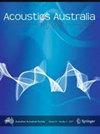Influence of Glazing on Sound Quality in the Car: Validation of Auralizations Obtained from SEA Calculations
Abstract
This paper explores the possibility to use statistical energy analysis (SEA)-based computations to synthesize sounds that can be used in a subjective evaluation of the unpleasantness of exterior noises transmitted in the car compartment through the glazing. A medium family car (C-segment car) was placed in a reverberation room. A sound source was placed outside the car. The resulting noise was measured at the driver’s position for nineteen different configurations of glazing. The transmission loss (TL) of each car window was computed using an in-house software and used in a SEA-based vibroacoustic synthesis model. The nineteen corresponding configurations were simulated. A listening test experiment was conducted to compare the signals synthesized from the measurements and from the simulations. The results showed a good agreement between the unpleasantness ratings of each glazing configuration. However, in the case of tempered glasses, a slight difference in the ratings was detected. Further analysis showed that this was due to an inaccurate prediction of the TL of the glazing, around its coincidence frequency. Additional measurements proved that this could be related to an underestimation of the damping. More precisely, because the intrinsic damping of a tempered glass is very low, the additional damping brought by the window seals must be taken into account. Further measurements were made to estimate the TL of a tempered glass mounted on a gasket. The use of these new values in the SEA calculation allowed for the correction of these difference in subjective ratings. The SEA computations can thus be used in the acoustic design process of cars.



 求助内容:
求助内容: 应助结果提醒方式:
应助结果提醒方式:


